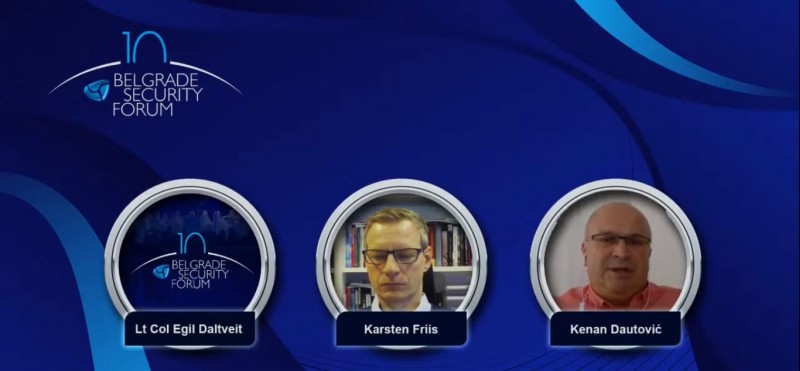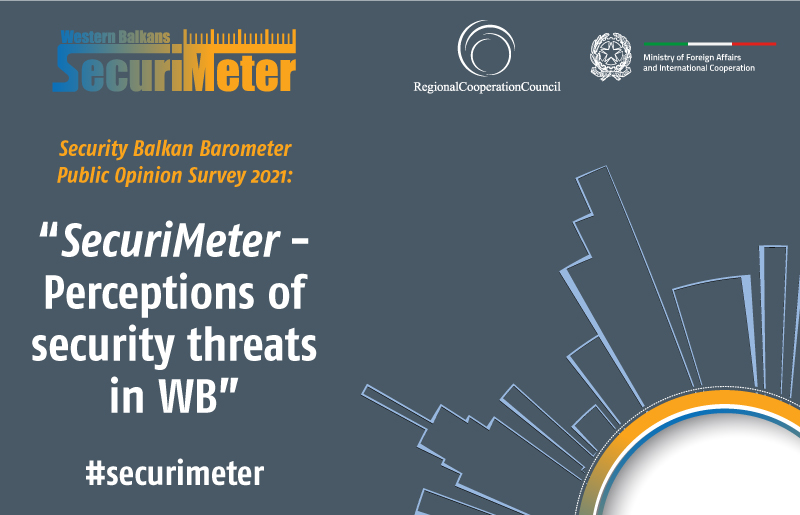- Home/
- News
BSF: Nordic model of security cooperation an example for the Western Balkans
BELGRADE – National interest and political will are the key factors that could determine the success of Western Balkans defense cooperation, while the economies of the region could learn a lot from the Nordic model, were some of the conclusions of the Belgrade Security Forum’s panel titled “Defence cooperation beyond the Alliance borders: What can the Balkans learn from Nordic countries?”
NORDEFCO – A case study
There are some differences and militaries between the Nordic countries and the Western Balkans, says Karsten Friis, Senior Researcher at the Norwegian Institute of International Affairs.
He says that the main difference is that Nordic countries have not been in war with each other for centuries, but the similarity is that Finland and Sweden are not part of NATO, whereas Norway and Denmark are.
“There is another similarity that we are small economies, and that is the reason this all started because that is the fact when it comes to military equipment – it is expensive. The price of this equipment rises much faster than other things. The whole apparatus when it comes to maintenance is the same. For the same amount of money, you can get less and less military power”, says Friis.
The initial thinking behind Nordic Defence Cooperation (NORDEFCO) was the military point of view is that if they gonna have a military at all, they had to cooperate.
“We cannot have parallel structures, we have to buy some kind of similar equipment so we can save money on maintenance and stuff like that. The idea is called “System similarity” that you should produce forces jointly. It was money-driven”, explains Friis.
He says that the challenge of Europe is that it has many parallel structures. For example, Europe has 17 kinds of main battle tanks in Europe, where the US has only one. Same is with ships, planes. Too much money is spent on parallel, unequal systems and it makes sense to buy more similar things to save money.
Friis thinks that this approach didn’t work very well. Throughout the years all these initiatives expect one (development of common uniforms in among Nordic countries) failed, because of the different timeframes, standards, procurement rules etc.
However, in parralel to this came cooperation in the forms of joint exercices.
“Starting with planes, by being close with each other, the Sweedish, Finish and Norwegian airforces began doing weekly training in our common territories. That was a huge success because it brought Sweden and Finland into NATO standards when it comes to communicating. They developed a common language and NATO standards”, explained Friis and added that they started deploying together in the Balkans.
As Sweden and Finland became a part of the EU, these countries become non-aligned instead of neutral countries.
“This is an important thing because being military non-aligned means that you are not part of an Alliance, but it does not mean that you can’t choose to take sides one way or the other if and where there is a conflict. This enabled Sweden and Finland to develop a closer relationship with NATO. It enabled Swedish officers to be a part of the NATO HQ”, said Friis.
He thinks that the turning point came in 2014 with the Russian invasion of Crimea which changed the security landscape. This brought Sweeden and Finland even closer to NATO because they have more security concerns when it comes to Russia.
Balkan Medical Task Force is a good example of regional cooperation
Kenan Dautović, Associate Professor at Faculty of Political Science in Sarajevo, says that Balkan Medical Task Force (BMT), launched in 2007 and reaching its full operational capability 10 years later, is a prime example of good cooperation among Western Balkans countries.
“Balkan Medical Task Force is multinational modular unit is based on military medical capabilities of the participating nations. There are Albania, BiH, North Macedonia, Montenegro, Slovenia and Serbia. The mission is medical response and assistance to civilian authorities in case of national disasters within and out of the Balkan region with the purpose of improving interoperability of national medical capabilities to be available for deployment within a regional framework with the potential to be deployed in UN missions and operations”, explains Dautović.
He says that trough the BMT some of the key marks of interoperability could be found which is based on the issues that are not sensitive or diverging people.
“So when we look at that particular example, the lessons learned is that there was political support in the first instance and operational dedication. The other one is that everyone will certainly agree that the humanitarian aspect of the mission is acceptable to all economies in the region”, says Dautović.
“Another lesson is that it is a story about mutual interest because the Western Balkans is a military security complex with shared challenges risks and threats. There is a real need for having such capacities because during the natural disasters you can’t be present in the whole region at the same time”, he further emphasised.
However, he thinks that the problem with this framework of cooperation is that it is still not tested. He thinks that during the COVID-19 pandemic, the BMT could be activated and adds that it is weird that it still hasn’t been done.
Western Balkans between integration and fragmentation
According to Dautović, the aftermath of the wars in the Western Balkans and dealing with war crimes mean that the region is still stuck in the same narrative.
He thinks that some regional political leaders lack sincerity in the way they proclaim certain attitudes but do not follow this with effective work.
“They may have a certain perception of how the region should look like and consequently different ambitions regarding NATO membership. There are still some separatist projects in the region that are taking place as well, and insufficient democratisation of the region still has some negative political influence, as well as the influence of the great powers over the region”, explains Dautović.
He says that there are two parallel processes ongoing at the same time. The first is the process integration where all countries in the Western Balkans want to become EU members and some of them are not interested in becoming a part of NATO. On the other side, there is also a process of fragmentation that is happening all around the world, particularly in Europe and also in the Western Balkans.
“The key feature of this environment is that the world is heading towards the new multipolar world because we are witnessing the realignment of the Great powers as we speak. At the continent, there is also the enlargement fatigue on the EU side”, says Dautović.
He adds that regarding the Western Balkans, we are seeing so many requirements and some kind of Euroscepticism. Dautović says that the most troublesome issue is basically that the “borders are back again”.
“The vocabulary of realism is very much present in the region and this is something that is the source of worry. Looking at the balance of power in the region, I see Serbia as a key actor who is in the position to contribute immensely to sorting out tensions. But it is also an actor trying to accommodate both integration and fragmentation at the same time. It may be problematic”, says Dautović.
Dautović says that the Western Balkans is a regional security complex with similar threats and challenges.
“All economies in the region suffer from shrinking state budgets. There is the attractiveness of Euro-Atlantic integration, there is a rich history of coexistence, similar culture, similar customs, a single language. A lot of people know each other which facilitates cooperation. National interest and political will are the keywords for this cooperation to be successful”, concludes Dautović.
Surce: Link
RCC SWP aims to publish a diversity of perspectives and as such does not endorse the opinions expressed in the republished articles. The views expressed in this article represent the author/publisher alone.



 Development of specialized PCVE web site is funded by EU FUNDS CN 2017-386/831 - "IPA II 2016 Regional Action on P/CVE in the Western Balkans"
Development of specialized PCVE web site is funded by EU FUNDS CN 2017-386/831 - "IPA II 2016 Regional Action on P/CVE in the Western Balkans"